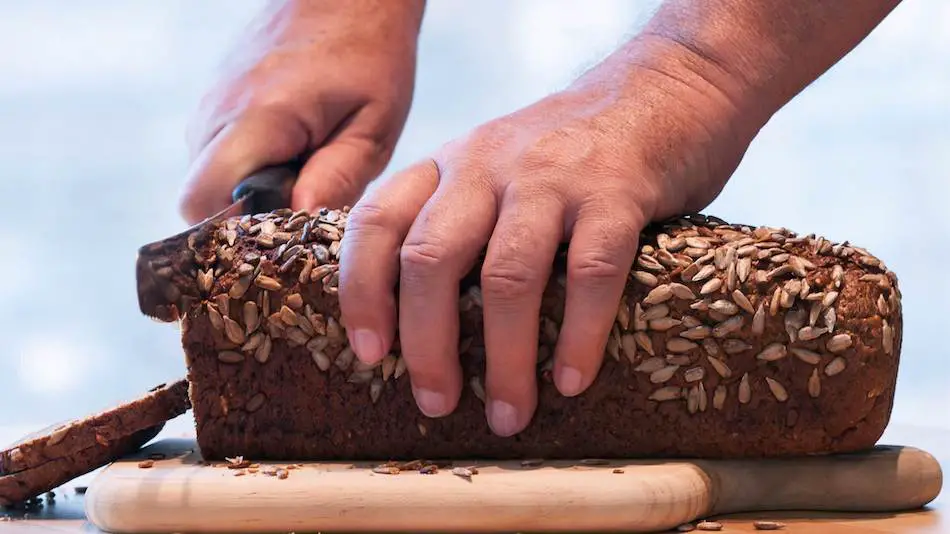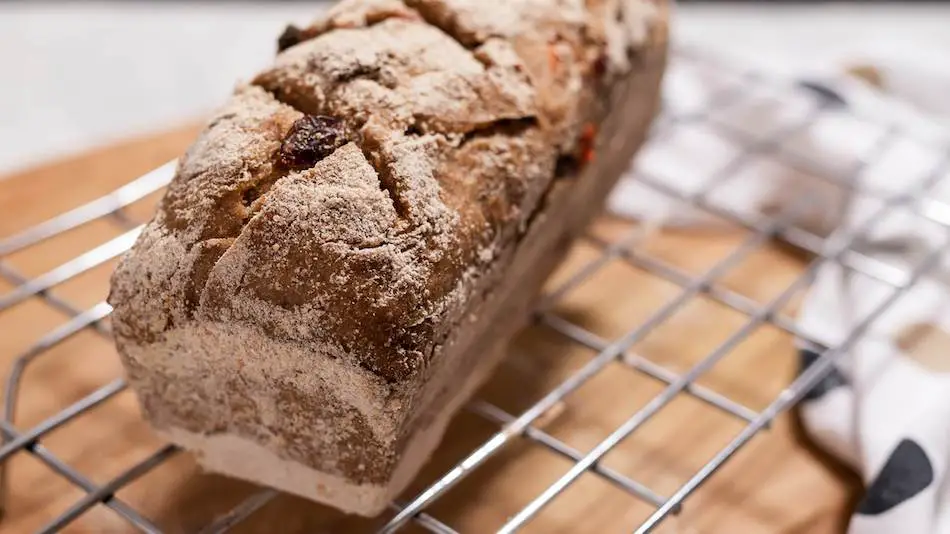
The art of bread baking has been around for centuries, and the process of slicing bread is an integral part of enjoying its delicious taste and texture. However, slicing bread at the wrong time can result in uneven, crumbly slices that do not hold their shape. In this article, we will explore the factors that influence the best time to slice bread after baking, and provide recommendations based on scientific research and industry best practices. By following our guidelines, you can ensure that your bread is sliced at the optimal time for the best possible results.
It is generally best to let bread cool completely before slicing it. This allows the bread to finish cooking and ensures that the slices will be even and neat. Additionally, slicing bread when it is hot can cause it to crumble or tear. If you are in a hurry, you can slice the bread after it has cooled for at least 15 minutes. This will allow the bread to firm up enough to be sliced without causing too much damage.
- Let the bread cool on a wire rack for at least 15 minutes
- Use a sharp, serrated knife to carefully slice the bread
- Hold the knife at a slight angle and saw back and forth to create even, neat slices
- Be careful not to press down too hard, as this can cause the bread to crumble or tear
- If making sandwich bread, slice the bread horizontally to create two flat pieces
- Store sliced bread in an airtight container or bag to keep it fresh
- Slice only as much bread as you will need for a single meal or snack
- Freeze any leftover bread by wrapping it tightly in plastic wrap or foil
- Thaw frozen bread at room temperature or in the refrigerator before toasting or reheating it for serving
What Happens If You Slice Bread Too Early?
If you slice bread too early, it can cause the bread to crumble or tear. This is because the bread is still hot and soft when it is sliced, and the knife can easily damage the delicate structure of the bread. Additionally, slicing bread too early can cause the slices to be uneven and irregular, which can affect the overall appearance of the bread. It is generally best to let bread cool completely before slicing it to ensure that the slices are even and neat, and to avoid damaging the bread.
How Long Will Bread Continue To Cook After Baking?
Bread will continue to cook for a short time after it is removed from the oven. This is because the heat from the oven will continue to be absorbed by the bread, causing it to finish cooking and firm up. This process is known as “carryover cooking,” and it typically lasts for 10-15 minutes for most breads. During this time, it is important to let the bread cool before slicing it to ensure that it does not crumble or tear. Once the bread has cooled, it is ready to be sliced and enjoyed.
How Long Do I Have To Wait Before Slicing Bread?
The amount of time that you need to wait for bread to rest or cool will vary depending on the type of bread and the size of the loaf. In general, it is best to let bread cool for at least 15 minutes before slicing it. This will allow the bread to firm up and finish cooking, which will make it easier to slice without damaging the bread. If you are in a hurry, you can slice the bread after it has cooled for 15 minutes. However, for the best results, it is recommended to let the bread cool for at least 30 minutes to an hour before slicing it. This will ensure that the bread is fully cooked and easy to slice without causing any damage.
Rest The Bread On A Wire Rack
Resting bread on a wire rack is the best way to cool it after baking. This is because a wire rack allows air to circulate around the bread, which helps it to cool evenly and prevents it from becoming soggy or sticky. Additionally, a wire rack keeps the bread elevated off of the surface, which helps to prevent the bottom of the loaf from becoming moist and mushy. By resting bread on a wire rack, you can ensure that it cools evenly and retains its delicious texture and flavor.

Do I Wrap The Bread When It’s Resting?
It is not necessary to use a dish cloth to rest bread after baking. In fact, using a dish cloth can create excess moisture that can make the bread soggy and cause it to stick to the cloth. Instead, it is best to let bread cool on a wire rack or on a clean, dry surface. This will allow air to circulate around the bread, which will help it to cool evenly and prevent it from becoming soggy.
What If The Bread Rests For Too Long?
If you leave bread to rest for too long, it may begin to dry out and lose its flavor and texture. This is because the bread will continue to cool and firm up as it sits, which can cause it to become stale and hard. Additionally, leaving bread to rest for too long can cause the crust to become tough and chewy, which can make it less enjoyable to eat. To avoid these problems, it is best to let bread cool for the recommended amount of time before slicing and enjoying it.
The Best Knives For Slicing Bread
The best knives for slicing bread are those with a sharp, serrated edge. Serrated knives are specifically designed for slicing bread and other foods with a hard crust and a soft interior. The teeth on a serrated knife make it easy to saw through the crust of the bread without crushing the tender interior, which can help to prevent the bread from crumbling or tearing. Additionally, serrated knives are less likely to dull over time, which means they will remain sharp and effective for a longer period of time. Some popular serrated knives for slicing bread include the Wusthof Classic Bread Knife and the Zwilling J.A. Henckels Pro Bread Knife.
This knife was voted best bread knife by America’s Test Kitchen. It’s called the Mercer Culinary M23210 Millennia. You can buy it for under $20. Check it out here.
What Direction Should I Slice Bread?
When slicing a fresh loaf of bread, it is best to slice it in a horizontal direction. This means slicing the bread along its length, creating slices that are parallel to the bottom of the loaf. This method of slicing bread is commonly used for making sandwiches, as it creates two flat, even pieces that are easy to fill and eat. Additionally, slicing bread in a horizontal direction allows you to control the thickness of each slice, which can be useful for achieving a uniform texture and appearance. To create horizontal slices, hold the bread steady on a cutting board and use a sharp, serrated knife to carefully slice the bread from end to end. Be sure to saw back and forth with the knife to create even, neat slices.
Do I Slice The Whole Loaf?
After making a fresh loaf of bread, it is best to slice only as much as you will need for a single meal or snack. This will ensure that the bread stays fresh and tasty, and is ready to be enjoyed at its best. If you have leftover unsliced bread, you can store it in an airtight container or bag to keep it fresh and prevent it from drying out. This will help to preserve the bread and prevent it from becoming stale or moldy. Additionally, you can freeze any leftover bread to preserve it for later use. Simply wrap the unsliced bread tightly in plastic wrap or foil, and store it in the freezer for up to three months. When you are ready to use the frozen bread, thaw it at room temperature or in the refrigerator, and then slice and toast or reheat it before serving.

